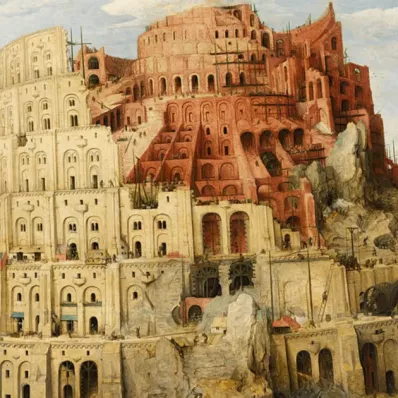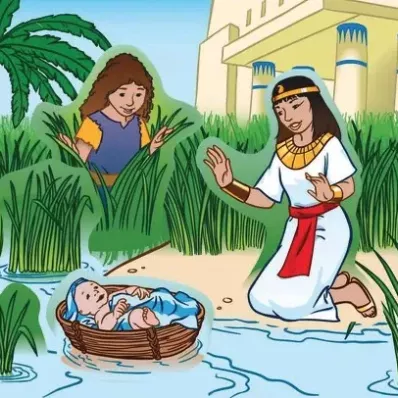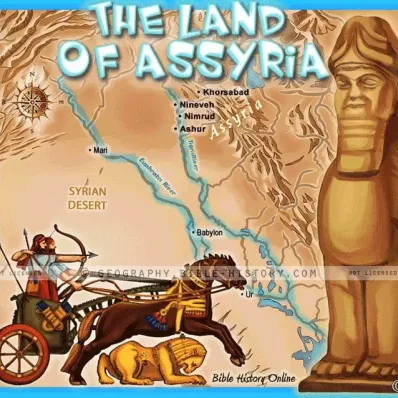Jordan
Heb. Yarden, "the descender;" Arab. Nahr-esh-Sheriah, "the
watering-place" the chief river of Israel. It flows from
north to south down a deep valley in the centre of the country.
The name descender is significant of the fact that there is
along its whole course a descent to its banks; or it may simply
denote the rapidity with which it "descends" to the Dead Sea.
It originates in the snows of Hermon, which feed its perennial
fountains. Two sources are generally spoken of. (1.) From the
western base of a hill on which once stood the city of Dan, the
northern border-city of Israel, there gushes forth a
considerable fountain called the Leddan, which is the largest
fountain in Syria and the principal source of the Jordan. (2.)
Beside the ruins of Banias, the ancient Caesarea Philippi and
the yet more ancient Panium, is a lofty cliff of limestone, at
the base of which is a fountain. This is the other source of the
Jordan, and has always been regarded by the Jews as its true
source. It rushes down to the plain in a foaming torrent, and
joins the Leddan about 5 miles south of Dan (Tell-el-Kady). (3.)
But besides these two historical fountains there is a third,
called the Hasbany, which rises in the bottom of a valley at the
western base of Hermon, 12 miles north of Tell-el-Kady. It joins
the main stream about a mile below the junction of the Leddan
and the Banias. The river thus formed is at this point about 45
feet wide, and flows in a channel from 12 to 20 feet below the
plain. After this it flows, "with a swift current and a
much-twisted course," through a marshy plain for some 6 miles,
when it falls into the Lake Huleh, "the waters of Merom" (q.v.).
During this part of its course the Jordan has descended about
1,100 feet. At Banias it is 1,080 feet above sea-level. Flowing
from the southern extremity of Lake Huleh, here almost on a
level with the sea, it flows for 2 miles "through a waste of
islets and papyrus," and then for 9 miles through a narrow gorge
in a foaming torrent onward to the Sea of Galilee (q.v.).
"In the whole valley of the Jordan from the Lake Huleh to the
Sea of Galilee there is not a single settled inhabitant. Along
the whole eastern bank of the river and the lakes, from the base
of Hermon to the ravine of Hieromax, a region of great
fertility, 30 miles long by 7 or 8 wide, there are only some
three inhabited villages. The western bank is almost as
desolate. Ruins are numerous enough. Every mile or two is an old
site of town or village, now well nigh hid beneath a dense
jungle of thorns and thistles. The words of Scripture here recur
to us with peculiar force: 'I will make your cities waste, and
bring your sanctuaries unto desolation...And I will bring the
land into desolation: and your enemies which dwell therein shall
be astonished at it...And your land shall be desolate, and your
cities waste. Then shall the land enjoy her sabbaths, as long as
it lieth desolate' (Lev. 26:31-34).", Dr. Porter's Handbook.
From the Sea of Galilee, at the level of 682 feet below the
Mediterranean, the river flows through a long, low plain called
"the region of Jordan" (Matt. 3:5), and by the modern Arabs the
Ghor, or "sunken plain." This section is properly the Jordan of
Scripture. Down through the midst of the "plain of Jordan" there
winds a ravine varying in breadth from 200 yards to half a mile,
and in depth from 40 to 150 feet. Through it the Jordan flows in
a rapid, rugged, tortuous course down to the Dead Sea. The whole
distance from the southern extremity of the Sea of Galilee to
the Dead Sea is in a straight line about 65 miles, but following
the windings of the river about 200 miles, during which it falls
618 feet. The total length of the Jordan from Banias is about
104 miles in a straight line, during which it falls 2,380 feet.
There are two considerable affluents which enter the river
between the Sea of Galilee and the Dead Sea, both from the east.
(1.) The Wady Mandhur, called the Yarmuk by the Rabbins and the
Hieromax by the Greeks. It formed the boundary between Bashan
and Gilead. It drains the plateau of the Hauran. (2.) The Jabbok
or Wady Zerka, formerly the northern boundary of Ammon. It
enters the Jordan about 20 miles north of Jericho.
The first historical notice of the Jordan is in the account of
the separation of Abraham and Lot (Gen. 13:10). "Lot beheld the
plain of Jordan as the garden of the Lord." Jacob crossed and
recrossed "this Jordan" (32:10). The Israelites passed over it
as "on dry ground" (Josh. 3:17; Ps. 114:3). Twice afterwards its
waters were miraculously divided at the same spot by Elijah and
Elisha (2 Kings 2:8, 14).
The Jordan is mentioned in the Old Testament about one hundred
and eighty times, and in the New Testament fifteen times. The
chief events in gospel history connected with it are (1) John
the Baptist's ministry, when "there went out to him Jerusalem,
and all Judaea, and were baptized of him in Jordan" (Matt. 3:6).
(2.) Jesus also "was baptized of John in Jordan" (Mark 1:9).

















